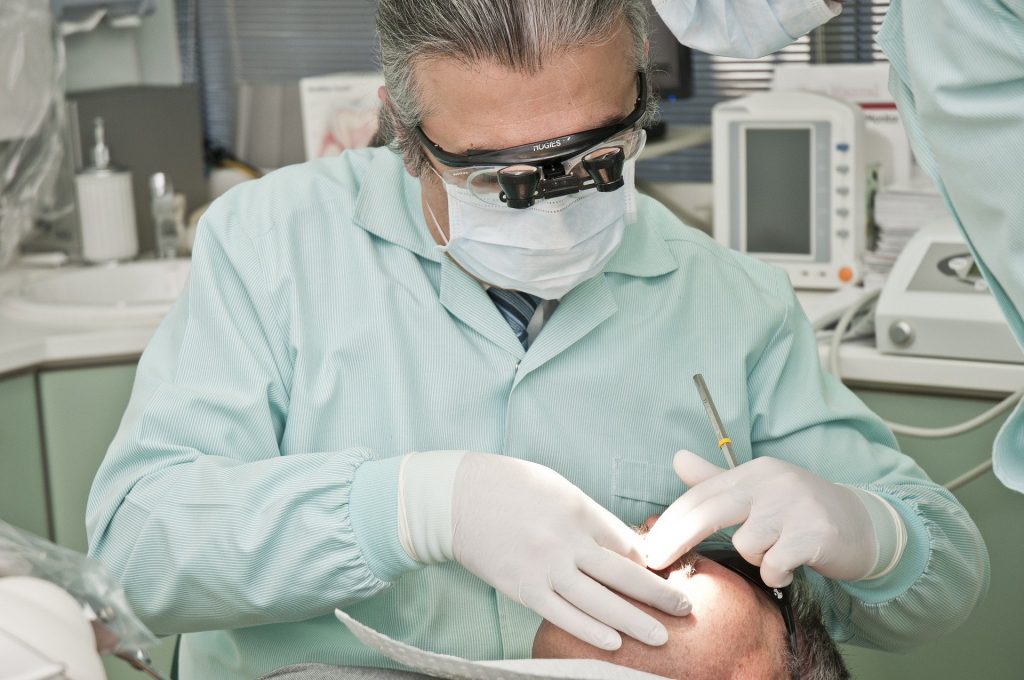
Woman wearing dental braces to correct jaw alignment problem
The jaw, like any other joint in the human body, should be able to move smoothly to perform its task properly. Incorrect jaw alignment may lead to serious problems that may include speech and eating difficulties, and can sometimes develop other dental problems.
Good thing is that jaw misalignment can be corrected with the help of dental procedures and appliances like braces and palatal expanders. Yes, those metals attached to your teeth don’t only work to give you that perfect smile– it also improves the way you live your life!
Is your jaw misaligned?
Many may not have any idea on how to check if their jaw is misaligned. One proper way to tell that is by observing your teeth. Look in the mirror and bring your upper and lower teeth together. If they are properly aligned, your upper front teeth should be sitting slightly outside of your lower front teeth.
If your upper front teeth protrudes too far from your lower teeth, you have the case of being ‘overbite’. As such, if your lower front teeth sit outside of your upper teeth, you are suffering from an ‘underbite’ dental condition. These two are the most common cases of jaw misalignment.
Other jaw misalignment symptoms may not be seen easily, but can be felt and experienced by the patient. Some common symptoms are:
- Pain in the jaw, even if it’s unmoving.
- Stiffness and pain while eating or chewing
- Breathing through the mouth excessively, which doesn’t have to do with nasal congestion
- Facial or jaw pains after eating or speaking
- Difficulty in speech because of pain or stiffness
- Sleeping troubles due to pressure or pain felt in your jaw while in different sleeping positions
- Having a hard time finding a comfortable ‘bite’
If you’re experiencing any of these symptoms, you may have to visit your nearest dentist or orthodontist to help assess your jaw misalignment problems.
Jaw alignment procedures
Procedure in aligning your jaw can vary depending on your jaw’s condition. The first thing you have to do is to consult your orthodontist and allow him or her to do some tests to better see how they can do their work well. Giving your dentist a good grasp on your dental history will help a lot in determining the best treatments for you.

Orthodontist working on a patient
Problems in jaw alignment can be treated via non-invasive treatments to correct it. Dental braces and/or palatal expanders can be some of the most effective non-invasive treatments that can help in aligning the jaw.
Braces does its best work in fixing crooked teeth, overcrowding, malocclusions, as well as jaw alignment. Aside from being the most conservative treatment, it has also been proven the most effective and safe. This procedure is done by cementing brackets to your teeth to be used as anchorage for the wire that is placed around the teeth. This wire tightens to guide your teeth into its proper position.
Palatal extenders, however, are used to create more space in the upper jaw for teeth eruption. This is done by widening the child’s upper jaw to give way for new teeth to arrive. Palatal expanders eliminates overcrowding, gets rid of crossbites, reduces impacted teeth, and gives more room for teeth growth in the jaw.
In some cases, braces and palatal expanders are used at the same time. Orthodontists would first attach palate expanders to create room for the teeth and align the jaw. After this, braces can be placed to correct the teeth’s alignment.
Surgery or Braces?
The jaw can also be aligned through invasive medical treatments, but if braces and palate expanders can do the trick, what’s the point of turning to surgery?
Jaw alignment surgeries can go from $20,000 to $40,000 without insurance. This is enough to cover procedures like Xray, general anesthesia, bone cutting and reshaping, and jaw repositioning. After, you’ll need complete rest and can take you at least 3 weeks to recover from all that.
Non-invasive treatments like jaw alignment braces and palatal expanders, can correct your jaw’s alignment as well. Though it might take effect gradually, it is made to be safer, cost-efficient, and less painful.


Really a very helpful article thanks for sharing and keep on sharing!
Dr Narnolys Dental Clinic provides complete dental solution in Ranchi.
Contact for Complete Dental Solutions.
What is Face Lift dentistry? How does it align the jaws without braces or surgery?
Thank You for Your Great Content!
Dental braces are normally wired devices used by orthodontists to straighten and align misaligned and crowded permanent teeth of a person. The aim of getting a dental braces treatment is either to enhance the appearance of the individual or improve the capability to chew and eat food. Overall, the final result of all dental braces services in Surat is to improve the dental health of an individual, which in turn contributes to improving overall health.